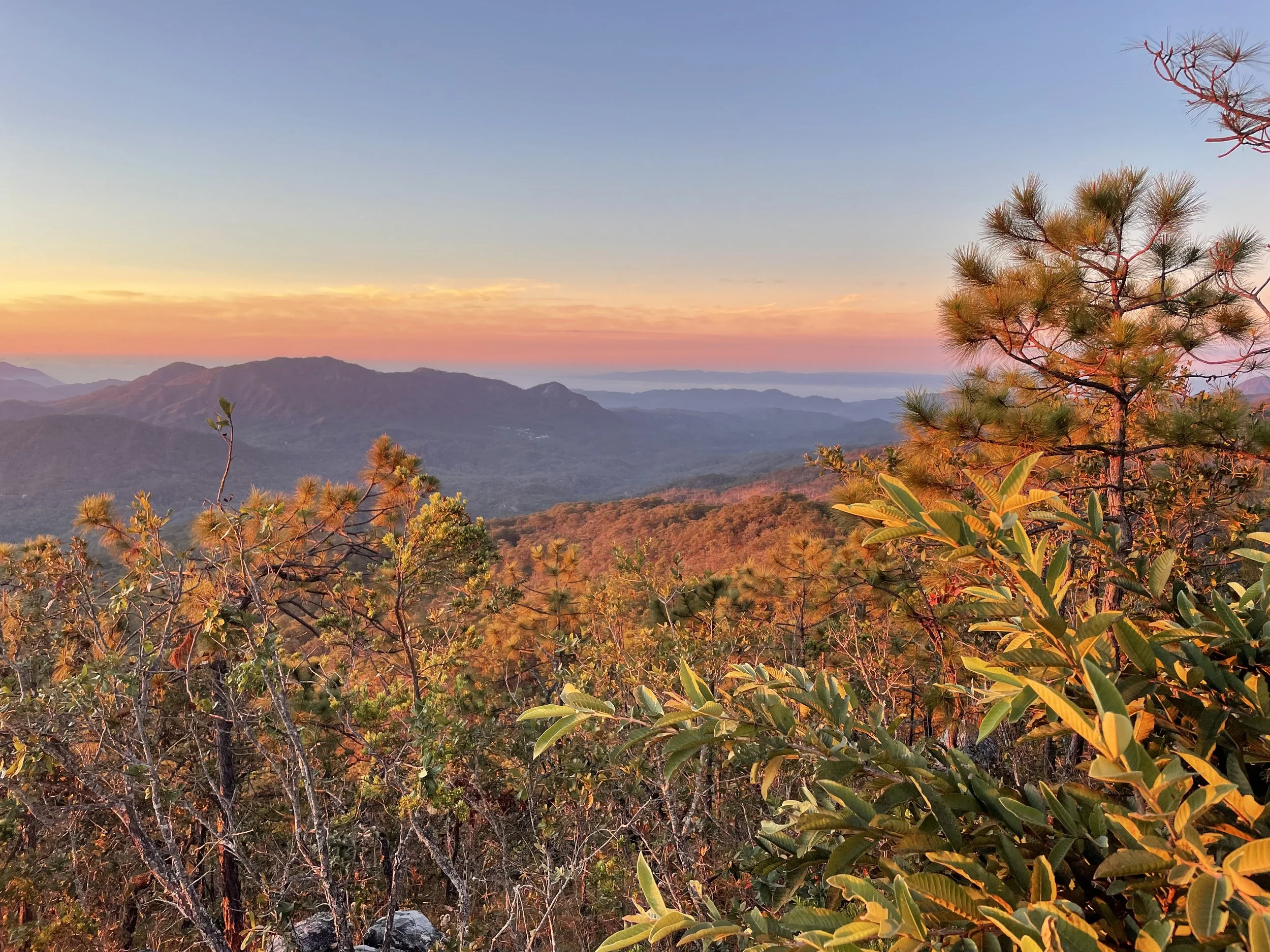Salt of the Earth
In one of the oldest nations on earth, I follow local friends through
the stunning hinterlands on an adventure to find supposed evidence
that Jesus Christ was a black man and actually born in Ethiopia.
"Jesus was a Black man, and I have proof," Abraham stated with total confidence.
I looked at Solomon, whose eyes twinkled from the smile on his lips. He nodded in agreement. "I spent a lot of time out here mapping the roads my company would build, and I found something that proves Jesus was Black." Abraham continued.
Together with my partner Spiros, the four of us had driven an entire day and night through the Precambrian sandstone sediments of the Wag Himra zone of the Amhara region, one of the most remote places I had ever visited. A few days earlier, we were approached by Solomon, an English-speaking local, at the bus stop in Sekota. He possessed an unusual charisma and appeared to be well known amongst other locals. We arrived in the region's capital along an unnamed rural road on a bus bound for Lalibela, the site of the famous rock-hewn Christian churches. We came hoping to find an authentic experience of rural Ethiopia far off of the tourist trails. Neither Spiros nor I possessed much information about where we were except that this had once been the 1985 famine's epicentre, responsible for claiming upwards of a million lives. Agriculture was undoubtedly the foundation of society, though severe drought, soil degradation, and decades of civil war had led to this incomprehensible tragedy.
Spiros and I were eager to take Solomon up on his offer to explore after a couple of days of languishing in the shaded courtyard of our hotel and squirming from the relentless fleas that populated our bed. Together with his friend Abraham, a civil engineer constructing roads in the region, we set off towards an unknown location. Neither of the men explained where we were going, though both assured us that the trip would be well worth the effort.
When I asked Solomon how long it would take to reach the secret destination, he simply replied, "Let God manage our time."
Spiros and I sat in the open cab of Abraham's pickup until nearly twenty-four hours, and a brief nap later, God delivered us to an arm of the Tekezé River. The shiny blue river course carved the deepest and oldest canyon in Africa to eventually form a tributary of the Nile in neighbouring Sudan. Deep in the hinterlands of this region, people were as sparse as vegetation. Giant Fritata trees dotted the arid land like sentinels soaring above the seared earth. In addition to being the giver of shade, the hollowed centre of a Fritata is so enormous that it can shelter people. One infamous example was a tree that had once protected sixty people from a violent uprising in its cavernous trunk, including Ethiopia's future President. The few people we met along the way were either shepherds, farmers, or school children, and there was the occasional mud house where we rested to drink coffee and eat a simple meal. Everywhere we stopped, hordes of locals would gather and watch us with curiosity, and in this small cluster of tin-roofed huts on the edge of the Tekezé, it was no different. Every man, woman, and child came to the large expanse between their two rows of houses until they were a hundred-strong, enthusiastically bewildered by our presence in this relatively unknown corner of the world. Abraham had spent the morning organizing a small boat to take us upstream to an island discovered on his mapping mission. After spending the night out there, he awoke to find the supposed evidence of Jesus' true ancestry.
The Ethiopian Tewahedo Orthodox Church, one of the few pre-colonial Christian churches in sub-Saharan Africa, was possibly established as early as the 1st Century AD. Over 80% of the population of Amhara practice this ancient form of Christianity, and the church itself claims to possess the Ark of the Covenant — a gold-covered wooden box containing two of the stone tablets of the Ten Commandments — kept under tight security in a treasury in the northern city of Aksum. I had never met such devout people who so humbly embodied the true spirit of the teachings of Jesus Christ in all my life. Every person we encountered was eager to give us anything they possessed—from bread to fresh milk—irrespective of how poverty-stricken they may have been. The people of Wag Himra were faithful 'salt of the earth' folk.
Now armed with a decent stock of two-litre water bottles, our growing entourage of local companions turned our adventure into quite the expedition. We finally boarded a tiny boat with an open roof, the afternoon heat threatening to disintegrate us in its intensity. Our vessel sputtered along a portion of the 608-kilometre turquoise river, pleasantly contrasting the rich red sandstone escarpments it snaked between. I felt as though I had taken a step into prehistory.
In one of the world's oldest nations, it was impossible not to feel like an awestruck adolescent.
The most ancient remains of our human ancestor — 4-million-year-old Lucy — were found in Eastern Ethiopia only a few hundred kilometres away. To sail upon the Tekezé River was to make a pilgrimage to the very origins of human life on this planet. Perhaps I wasn't sure what this undertaking would reveal; a hieroglyph, a carving, or a stone wall painting? Abraham must've discovered something astonishing for us to travel so far and I was fully prepared to have my world rocked by it. But suddenly, we stopped. Incoherent words were exchanged by all the men aboard and then translated, "If we go any further, we are going to run out of petrol."
My heart sank. "Are we far?" I asked.
Abraham pointed, "It's there." he said. It was impossible to calculate distances from the water, as every bend we turned revealed another stretch of cliffs unfolding along the river. What was clear was that we would not make it.
I couldn't believe that we had come so far only to turn back now. To appease our disappointment, the captain docked at a nearby collection of hills, the stratified sediment appearing like a Japanese Zen Garden's raked lines. We strolled the ridges under the glaring sun and snapped some photos to make sense of what felt like a failed mission. On the precipice of one outcropping, I took a 360-degree survey of the ancient land I stood upon. I let the wind and sun anoint my skin and promised myself to one day return.
Though we did not unearth the alleged evidence that Jesus Christ was Ethiopian, it didn't really matter anyway. My voyage through the 'cradle of humanity' was an encounter with his humble servants, the real legacy of his teaching. And that belongs to every colour of the rainbow.
In these lands, where the sun dictates the activity of all living things, a man can be found everywhere and anywhere a tree is.
Ethiopia is the birthplace of coffee and it is always served black, often with popcorn.
Morning sunrise on the Tekezé River, in the Sehala woreda (district) of Wag Himra.
The entire village on the Tekezé River came out to greet us.
Spiros, Solomon, and I. Yup, I got a weave. "When in Wag Himra... "































